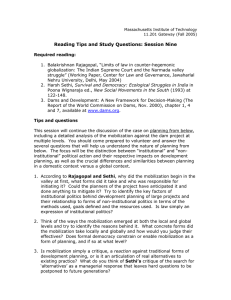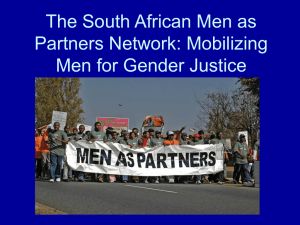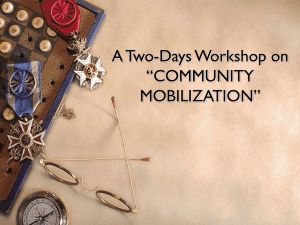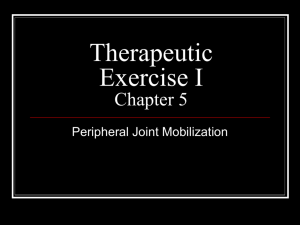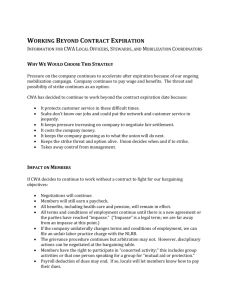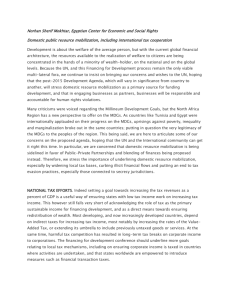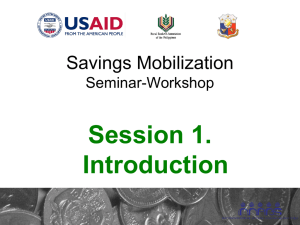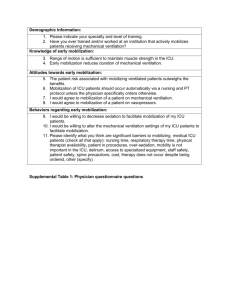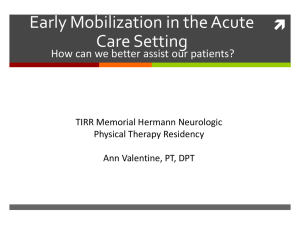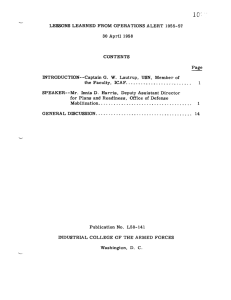Community Mobilization - amr
advertisement
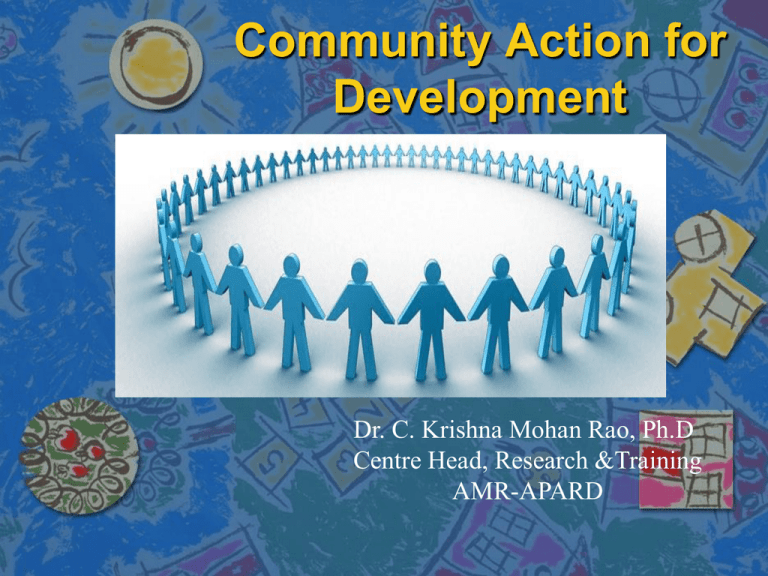
Community Action for Development Dr. C. Krishna Mohan Rao, Ph.D Centre Head, Research &Training AMR-APARD Community Action for Development What is community What is development What is community action Community What comes first in your mind when you think or hear the word “COMMUNITY” ? What is a Community A Community is a set of people living together with common interest” We all live in a community. There are different things that bind us together. Let us try to identify them. Territory Sharing resources Administrative unit Language Religion Culture Occupation What is Development Development means on overall positive change in the physical quality of life. This change for better encompasses both economic and social aspects. Dimensions of Development Development has two dimensions Economic Social It implies an improvement in quality of life through better health, education, housing and overall material and social welfare. Development Projects An analysis of development projects that have failed in the past shows that failure occurs because: the people concerned were not involved in the planning, implementation and monitoring of programmes which affected their lives; there was an insufficient level of participation of the beneficiaries. Community Action Community action refers to the process of building social relationships in pursuit of common community interests. Community action is seen as being the foundation of the community development process. Community development seeks to empower individuals and groups of people by providing these groups with the skills they need to affect change in their own communities. Community Action Explore the common issue & Set priorities Prepare to mobilize Prepare to scale up Organize the community For action Evaluate together Plan together Act together Steps in Community Action Step 1: Identify the problem/issue. Step 2: select a strategy to solve the problem Step 3: Community Mobilization Step 4: Implementation through people’s participation Step 5: Assess the results and improve Selecting Core Areas Identify core areas of community development Poverty Health – Maternal and child mortality, HIV/AIDs, Malaria Education – Pre-primary, primary, secondary Women empowerment Water and Sanitation Prohibition of Alcohol Agriculture and allied sector Skill Improvement Prepare to mobilize Identify a common issue that the whole community can get involved Gather information about the issue and the community Identify resources and constraints Select a strategy Depending on problem, plan for community dialogue and select a strategy. Some problems – require sensitization on the issue. – call for mobilization of community – need interaction with individual family members. Community mobilization A process whereby a group of people become aware of a shared concern or common need and decide to take action in order to create shared benefits. A continual and cumulative process that involves communication, education, and organization, which together lead to community action and development. Community mobilization linkages Capacity building Outside Group Community resources Participation Mobilization Empowerment Key Task involved in Community Mobilization Developing an on-going dialogue between community members Creating or strengthening community organizations (Committees etc.) Creating an environment in which individuals can empower themselves to address their own and their community’s needs Promoting community members’ participation Implementation Implementation and constant monitoring Assess the results Revise the strategy wherever necessary Scale up Community mobilization – model film Who are you? You are working for people, with people as a Bharat Nirman Volunteer, and so… What is your role? How can you help the people in the community? Facilitator A pearl is beautiful but alone it doesn't make a necklace. It is the thread which makes the necklace A facilitator Role of BNV BNV is community mobilizer. A mobilizer is a person who mobilizes, i.e. gets things moving. Social animator. A Catalyst Bringing People Together Building Trust Encouraging Participation Facilitating Discussion and Decision-making Helping Things to Run Smoothly . Facilitation in community mobilization process Skills needed for BNV Attitudes include: a willingness to examine and challenge their own assumptions, opinions and beliefs a genuine respect for all community members a non- judgmental and accepting approach an understanding that different people have different views and perspectives a belief in community capacity to take effective action. …..continued Skills include: good communication skills, especially listening good facilitation skills to enable communities to conduct their own analysis of their lives and situations techniques to help facilitation awareness of political, gender and cultural issues and relationships an ability to challenge assumptions sensitively (e.g. about the role of women). …continued Knowledge includes: the community mobilization process the principles of community mobilization knowledge of Education related Issues and problems, causes and effects understanding of the ethical issues related to community mobilization. . Conflict management Conflict is an inevitable result of social interaction and is not necessarily negative. A distinction must be made between positive and negative aspects of conflict. When constructively managed, conflict may lead to clearer ideas, innovative solutions and increased effectiveness and commitment. Factors contributing to conflict 1) 2) 3) 4) 5) 6) 7) 8) 9) Diverse groups Strategic disagreement Competition between groups Unreasonable expectations Lack of common understanding Goal conflict Poor communication skills Unclear/unfair expectations Power-plays and manipulation Conclusion Community action needs continuous efforts Using its available resources for the community effectively Obtaining support from the community, Explore cooperation with other agencies. Thank you
